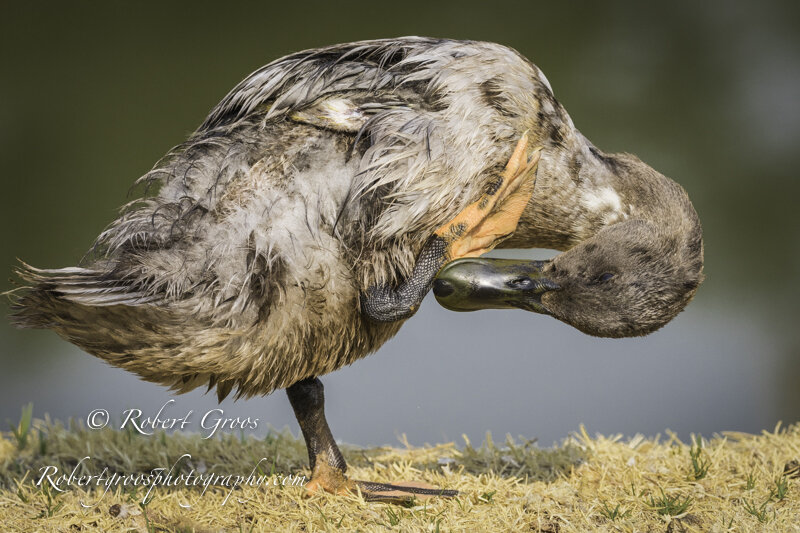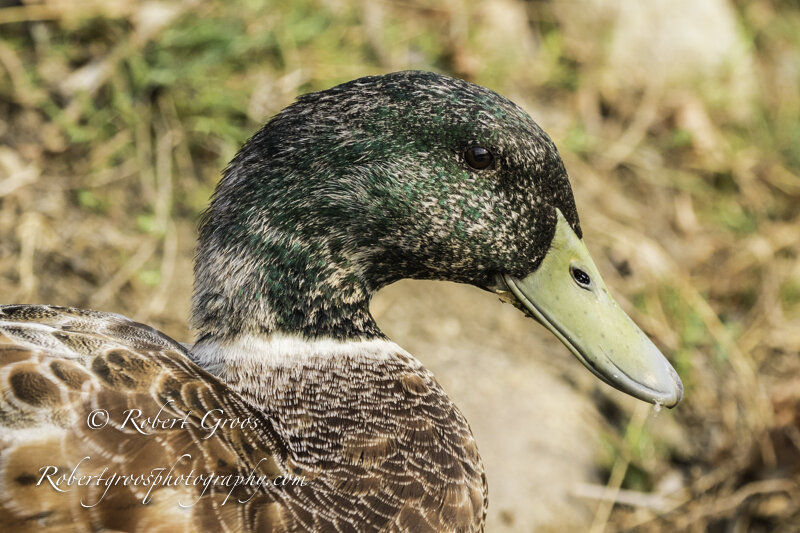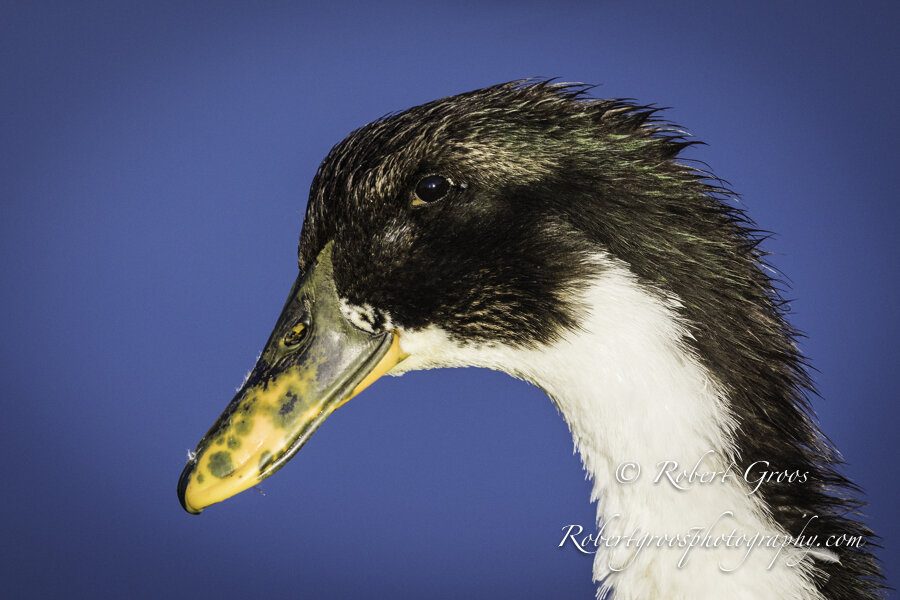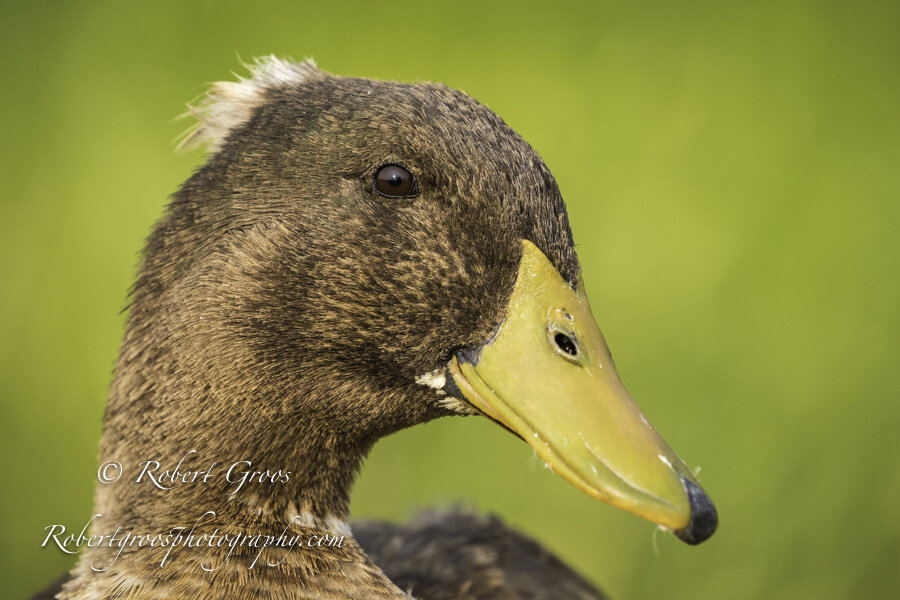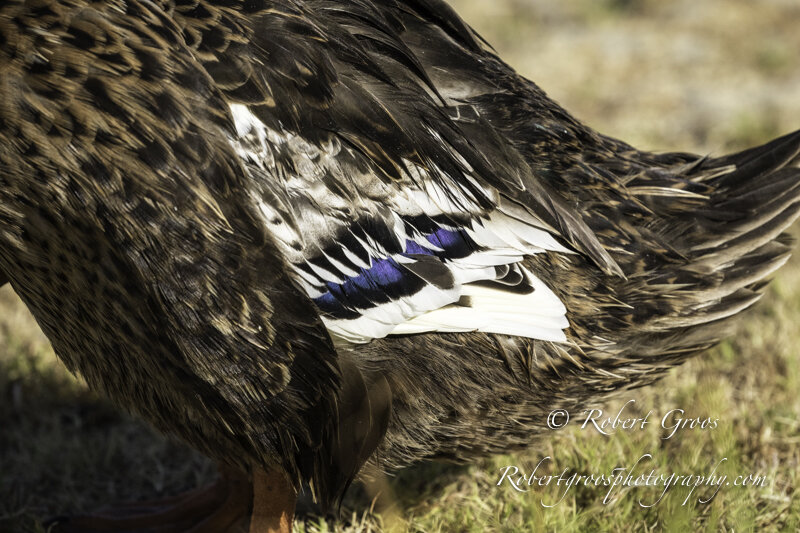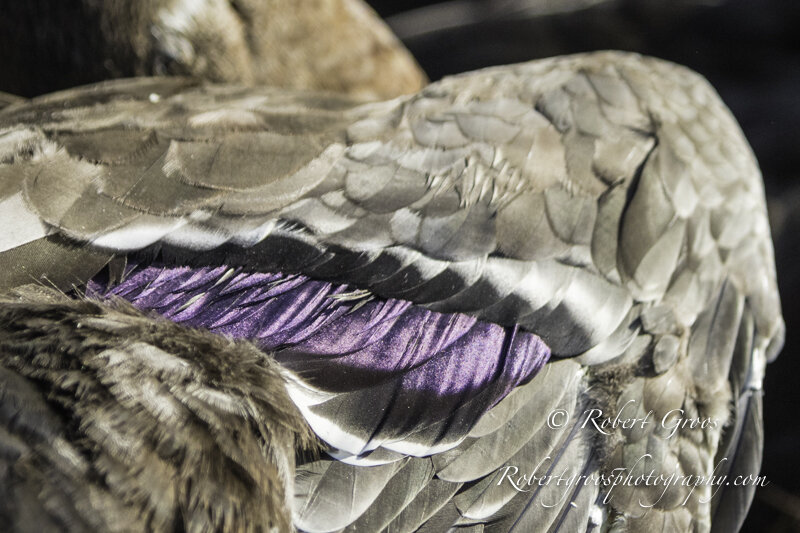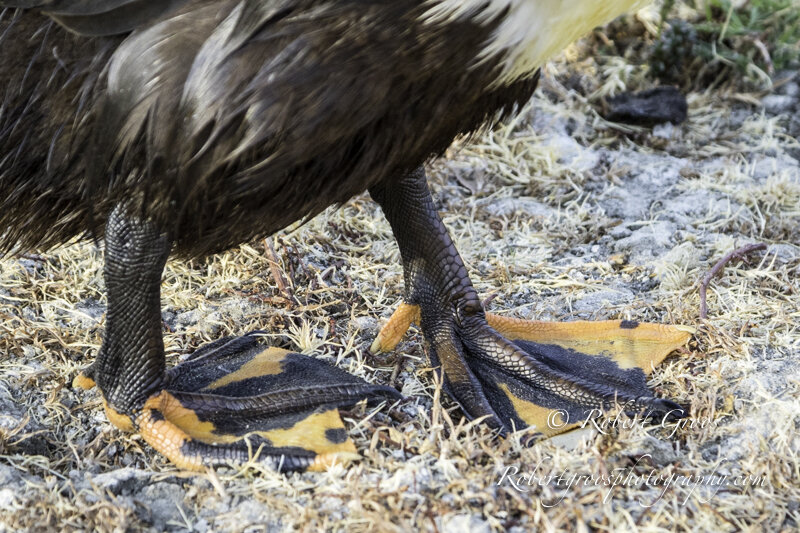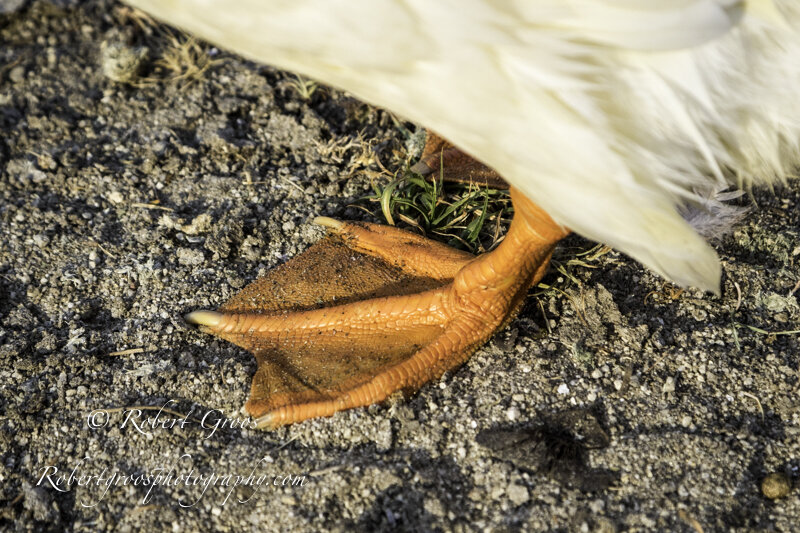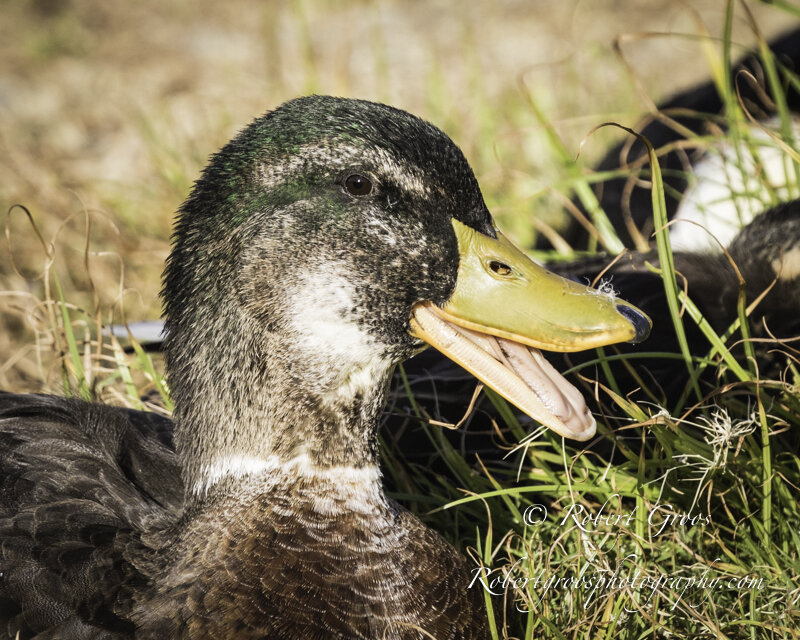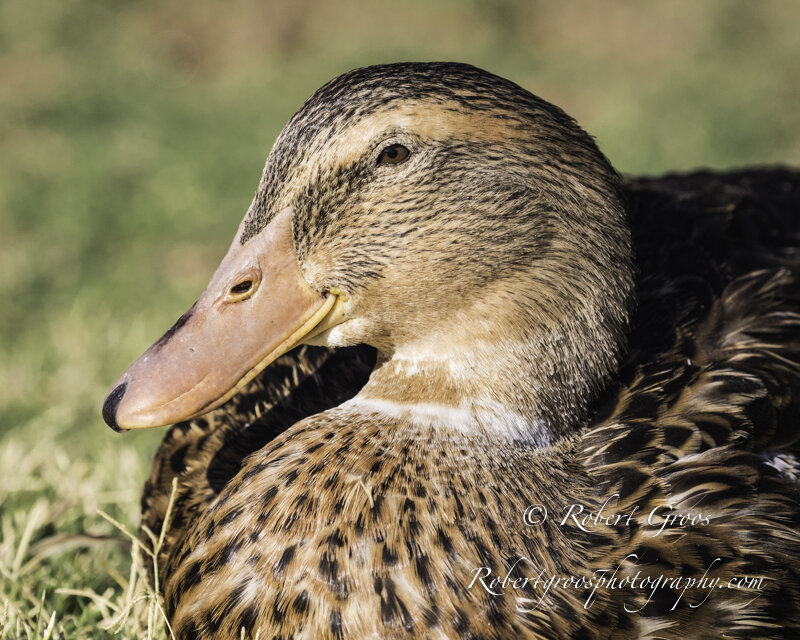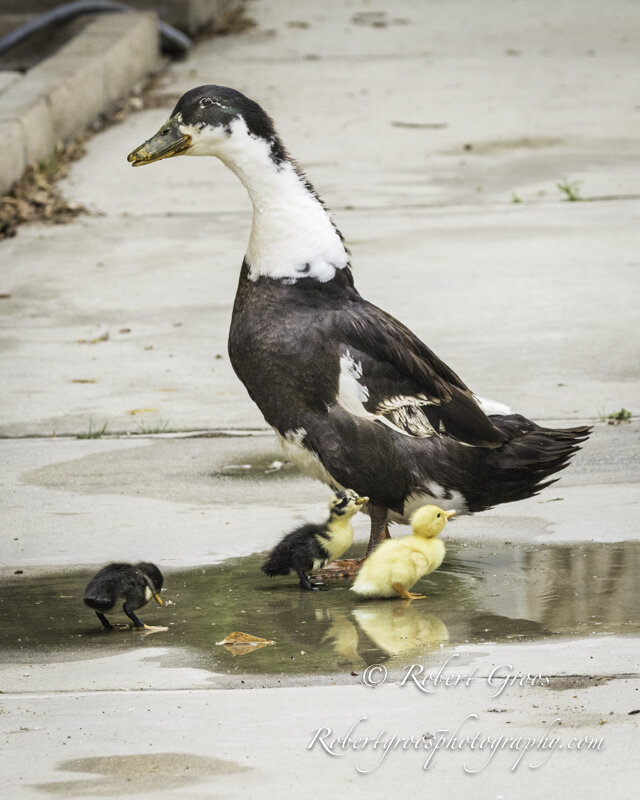The Duck Days of Summer
Have you ever been mobbed by a boisterous, double dozen of daffy ducks, and a gaggle of geese to boot? It happened to me one morning this past July while I was walking around Blue Heron Lake near my home in the oak woodland foothills south of Yosemite National Park. The experience, I can testify, was a bellyful of quacks, as I’ll explain further along in this post. But first, there is some background information I wish to share about how this all came about.
For the past two months, I’ve been stuck in the bird photography doldrums. It happens every year during July and August. Mating season ran its course weeks ago; fledglings have taken off to forage a living on their own; fall migration visitors are still a calendar page or two away. As wonderful as our full time resident birds are (Acorn Woodpeckers, Scrub Jays, Oak Ttitmice, White-breasted Nuthatches, House Finches, and my beloved California Quail), new and exciting avian photography prospects are as scarce as hen’s teeth right now.
To compound my ennui, a massive heat dome parked itself over much of the Southwest, creating temperatures at least 10 degrees higher than normal, including triple digits up to 114° for days on end. I might as well have moved to Palm Springs. Spending time outside with whatever mad dogs and Englishmen that might come my way has not been an enticing prospect (no slight intended towards the dogs; they don’t know any better).
I call this time of year the Duck Days of Summer.
Ducks (and molting Canada Geese) are the most visibly present of my avian neighbors at Blue Heron Lake. They are always there, front and center. You will even find them sitting in the middle of the roadway; they refuse to yield to impatient drivers who are forced to wait for a duck green light.
Ducks blocking roadway.
In our mini ecosystem, we have a raft of hybrid Mallard and American White Ducks (themselves a hybrid Mallard introduced from China). They have been interbreeding here for who knows how long. Tame ducks such as these (bred for meat, eggs, and probably too heavy to fly) are photographic subjects that in the past have never struck me as being interesting. After all, most of the time they are, well, just sitting ducks.
Sitting ducks, yes, but they are not necessarily idle. Their feathers are not waterproof, and consequently require constant maintenance. To this end, ducks use their bill to rub oil from the preen gland near their tail across their feathers to prevent them from becoming waterlogged.
Video of Mallard preening.
Mallard hybrid with one eye on alert.
When not preening, sleeping is the order of the day, and long before the mid-morning hour at that, on the grass in the shade of the trees. It's too warm to be anywhere else. If they hear you approach, they don’t even stir. One half of their brain will awaken and signal the eye facing you to open; the other side of the brain remains asleep (and the other eye remains closed) unless you become a threat.
Despite the lack of challenge in finding and photographing these birds, this July I decided to take a cue from lyrics I learned long ago. Maybe you recall the song by Stephen Stills:
“And if you can’t be with the one you love, honey, love the one you’re with.”
Which brings me back to the web-footed mobsters that surrounded me as I approached the shoreline one morning. They watched me exit my SUV, objects in hand (camera gear, of course). Seeing that I carried something, they were anticipating a handout because, in spite of signs being posted entreating folks not to feed the waterfowl, adults (often accompanied by small children) continually ignore the message.
People bring bags full of leftover bread to toss willy-nilly to the ducks and geese, all of whom happily devour this avian junk food with vocalizations full of glee that can be heard by one and all. And here they come, waddling as fast as their webbed feet will propel them. The behavior is addicting to both ducks and humans alike. Fun to watch, yes indeed, but not good for the health of the birds. Anyone approaching the shoreline is fair game to these feathered mendicants.
As I descended the embankment, the sleeping gang suddenly mobilized; a troop of Canada Geese was not far behind. Taken aback by the suddenness of it all, I was quickly surrounded, with raucous beaks at my toes. A photo was not possible with my telephoto lens because of their proximity. Regardless, I would not have been able to hold my camera still, I was laughing so much at the serendipity of the moment.
Duckling that hatched in mid-July explores mudflat.
That event initiated subsequent mornings looking for additional interesting photographic moments with these formerly “boring” subjects. And it didn’t take long to find one.
The diamond photo opportunity of Duck Days this summer was the lone duckling I discovered on a mud flat in mid-July. I wasn’t expecting to see a duckling because Mallard nesting activity had petered out a good month earlier. This late in the season yellow ball of downy fuzz was learning about water while its mother stood nearby. It didn’t take long before the two embarked upon on a leisurely aquatic excursion.
Baby Mallard duckling swimming video
I returned the next morning and watched it explore the expanse of its new environs, again under the watchful but sometimes dozing eyes of its mother.
Mallard duckling foraging video.
Duckings are precocial, so they are self-reliant upon hatching. They have self-thermal regulation, can walk, feed themselves, and swim within hours. My duckling was a day or two old at the most, as evidenced by the broken egg shell that remained a few feet away, and the egg tooth still visible on the tip of its upper bill. You know what an egg tooth is, don’t you?
Egg tooth at tip of bill.
A soon to hatch, fully developed embryo punctures the air pocket in the blunt end of the egg with this pointy knob, and repeatedly taps its bill against the shell lining. That action produces a series of tiny holes around the circumference of the shell, weakening it sufficiently that it cracks. The bird then pushes the top of the egg off, and voilà: daylight and a breath of fresh air. After a few days, the egg tooth falls off or is reabsorbed into the bill.
Having removed the top of the shell, there remains still much more exhausting work for the duckling to perform: it must now extract its tiny wings and feet from the sticky confines of the remaining shell, a trying endeavor, as illustrated in the video below.
Video of duckling hatching from egg.
Whew! Makes one tired just to watch, doesn’t it? Who would have imagined such a Herculean effort from a tiny bird! Some hatchlings may not have the energy to complete the task.
And now, returning to the raft of avian gangsters that surrounded me on the grass: how might I describe the morphology of this assembly of duck feathers? It is nothing like the classic Mallard drake and hen image you might have pictured in your mind. “Potpourri” might fit the bill. Or perhaps, more high toned, “designer duck collection.” Take your pick: soft gray, dark chocolate, rich chestnut, pastel brown, iridescent green and blue, black, white, two-toned, and my favorite, genetic bad hair day.
To help you get the picture, following is a gallery I’ve curated for you from my duck days of summer:
In parting, during this second summer of Covid-19 social distancing, remember the importance of always keeping your ducks in line.
Video of ducks walking in line
p.s. If you are not already on my mailing list and wish to be added for future posts, please send an email to: robertgroos1@gmail.com. Your information will not be shared, and you can unsubscribe at anytime. Thank you.






